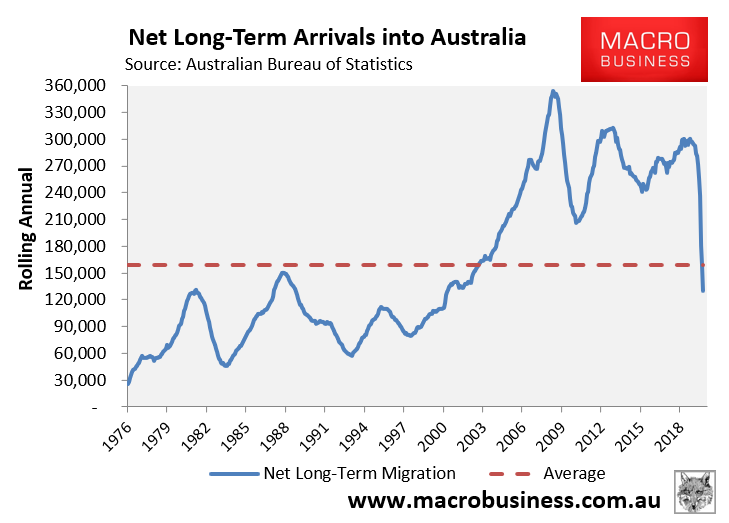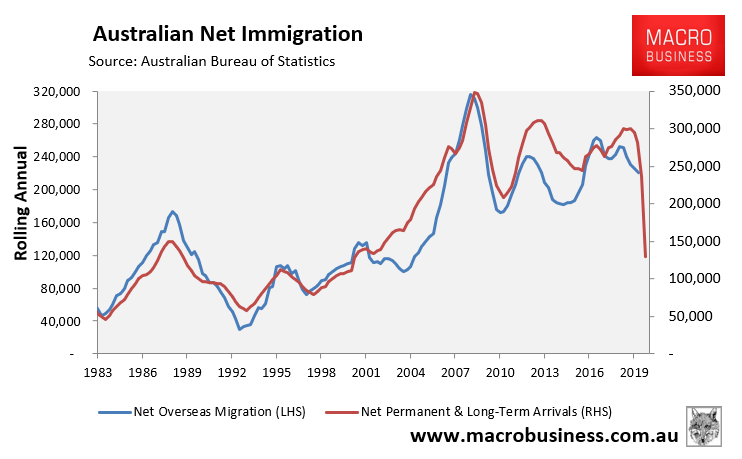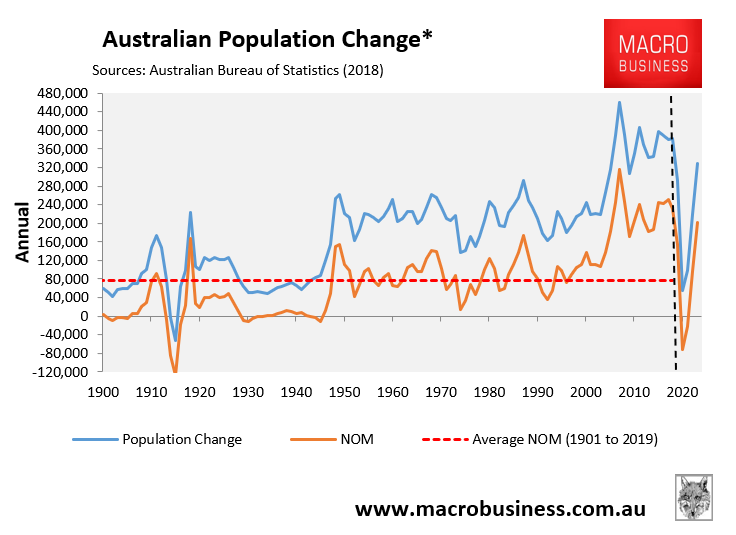Yesterday, the Australian Bureau of Statistics (ABS) released arrivals and departures data for the month of September, which revealed that the number net long-term arrivals collapsed to only 129,600 in the year to September, down 57% from the peak of 297,040 recorded in August last year:

Annual net long-term arrivals are now tracking at levels not seen since early 2001, before the mass immigration ‘Big Australia’ policy kicked off.
The monthly net long-term arrivals data is a leading indicator of the ABS’ official quarterly net overseas migration (NOM) data, which is current to March 2020:

As expected, it is pointing to heavy falls in NOM when the official quarterly data finally catches up.
This is unsurprising given the federal budget forecast that NOM will turn negative for the first time since the Second World War, recording declines of -71,600 in 2020-21 and -21,600 in 2021-22, before recovering to 95,900 in 2022-23 and 201,100 in 2023-24:

In other words, this is only the start.
While vested interests claim the collapse in immigration is an economic disaster, nothing could be further from the truth.
As the post-virus recovery takes hold, it will be far more evenly distributed between workers and capital, with a tighter labour market and higher salaries.
The immigration collapse will also provide Australia’s governments with a unique opportunity to catch-up on chronic infrastructure shortages.
That is a much fairer and more sustainable mix of growth than the ‘dumb’ growth generated by the population ponzi scheme.

